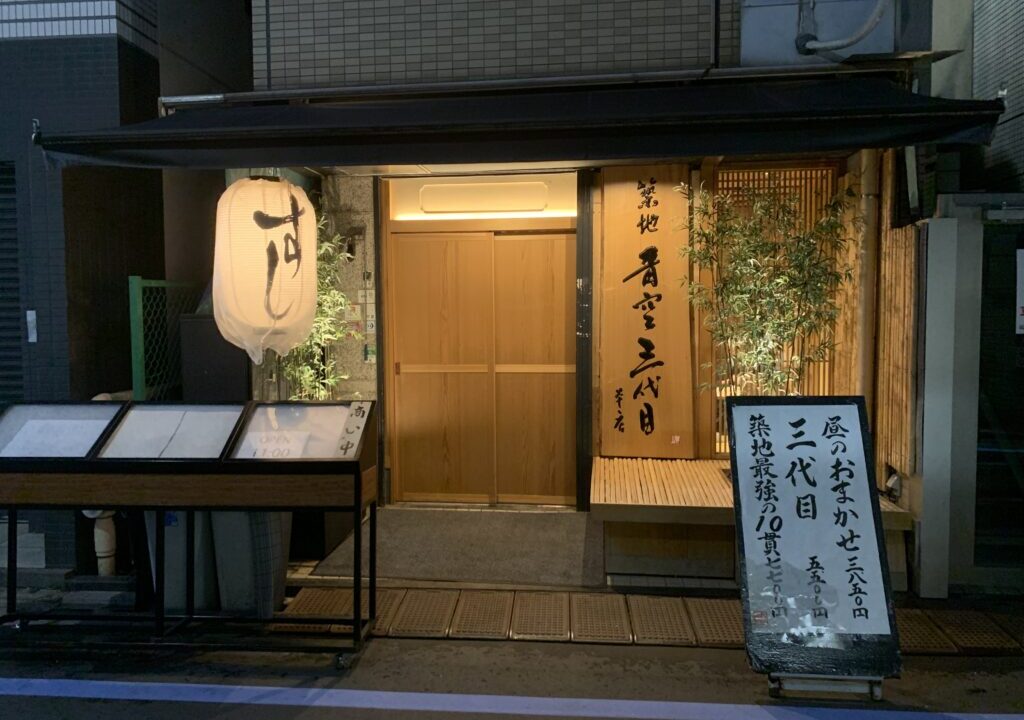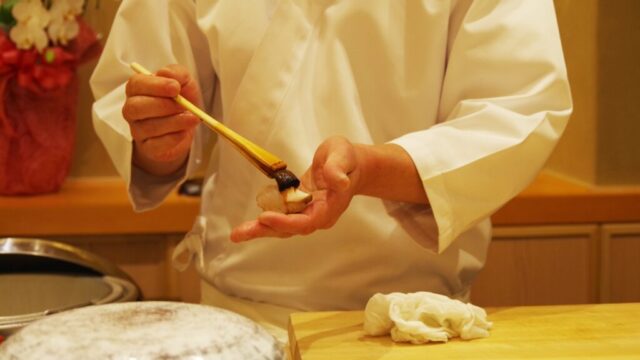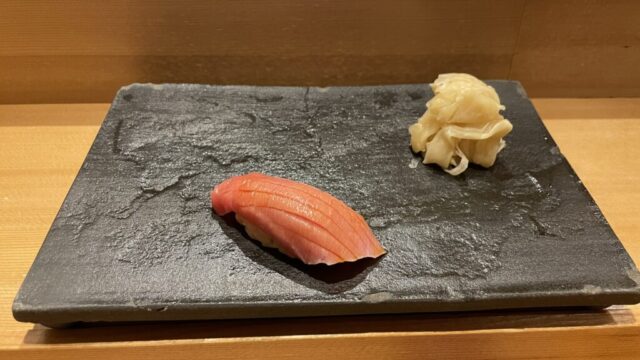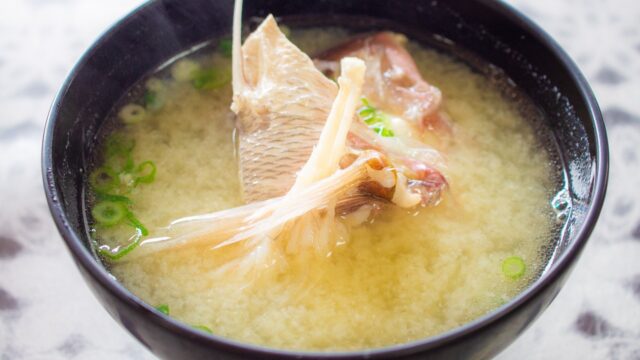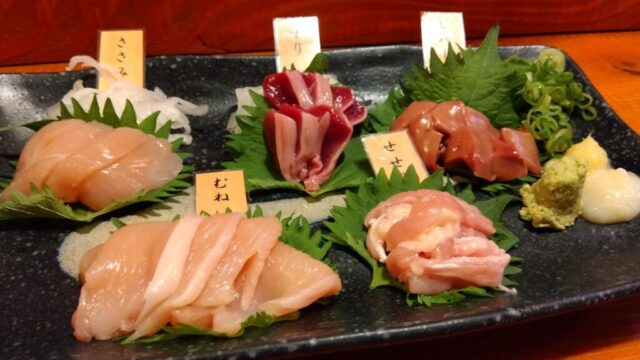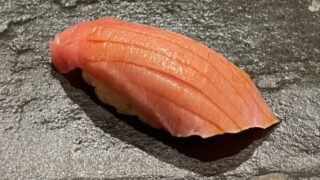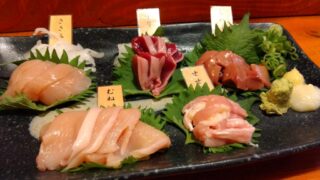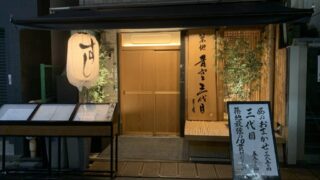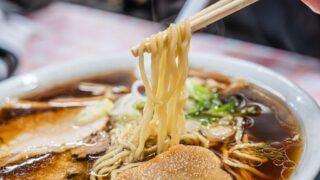This time, I’d like to introduce one of my favorite sushi restaurants in Tsukiji which is famous as Japan’s fish kitchen, Tsukiji Aozora Sandaime. Personally, sitting at the counter here and enjoying a selection of fresh sushi in front of me is the epitome of luxury.
For detailed information about sushi, please refer to the following article.
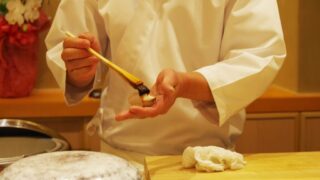
Tsukiji Aozora Sandaime
Aozora translates to “Blue sky,” and Sandaime means “Third generation.” They have multiple branches throughout Japan, including famous locations like Tsukiji, Marunouchi, and Ginza in Tokyo, and even outlets in Okinawa and Naha. This time, I visited the main branch.
Access
It’s about a 5-minute walk from Tsukiji Station on the Hibiya Line or Tsukiji Shijo Station on the Oedo Line. You can also walk from Ginza Station in about 15 minutes.
<Map>
Menu
They offer set course menus ranging from 5,500 yen to over 10,000 yen. You can also order a la carte from the display right in front of you. I prefer to order a la carte to pick my favorite items, but if you’re not familiar with sushi, choosing from the set courses can be just as enjoyable.
This sushi restaurant practices Edomae-style sushi, which means they not only serve delicious and fresh seafood but also add their unique touch to enhance the flavor further.
Let me introduce some of the items I enjoyed during this visit.
Sashimi on a Himalayan Salt Plate

One of the highlights of this restaurant is sashimi served on a Himalayan salt plate. They squeeze sudachi (Japanese citrus) over the Himalayan salt to dissolve the salt and then dip the sashimi in the salty sudachi juice instead of soy sauce. The refreshing taste is quite addictive.
Draft Beer

The draft beer they serve is Suntory’s Tokyo Craft. It had a distinctive pale ale flavor and was very delicious.
Nodoguro (Grilled)
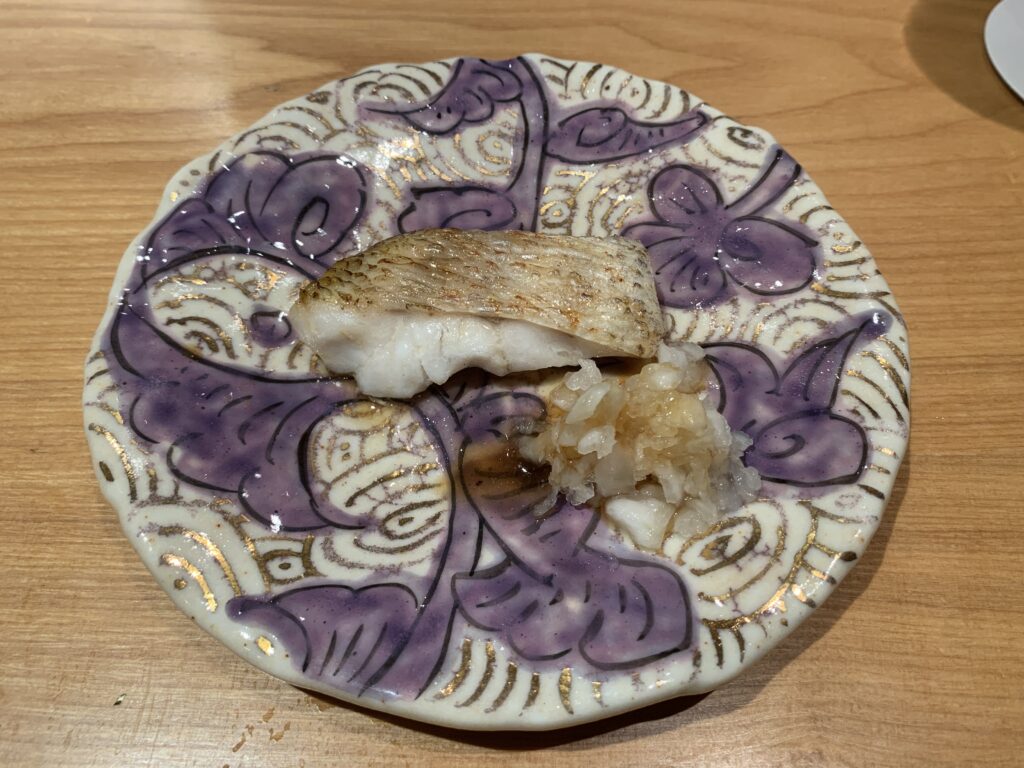
Nojigro is a premium fish often caught on the Sea of Japan side of Japan. It’s a delicious fish no matter how you prepare it, but due to its well-marbled texture, I decided to have it grilled. It was truly delicious with perfect grilling.
Maguro Akami (Tuna)
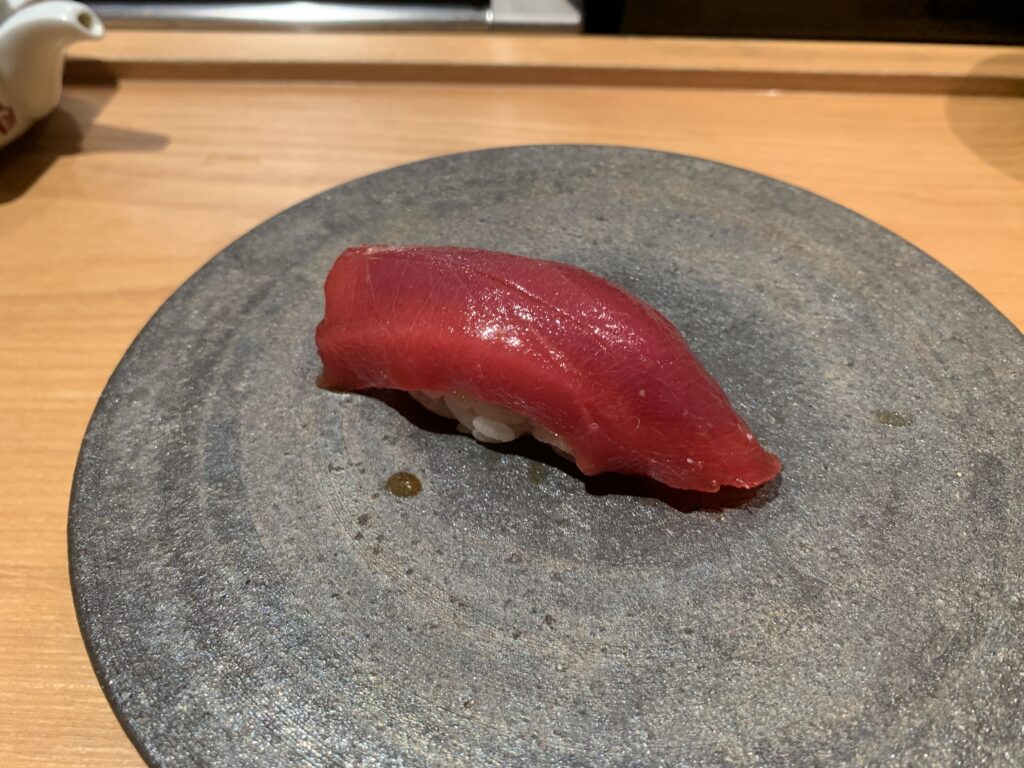
This lean tuna had a hint of yuzu flavor, which isn’t visible in the photo, adding a unique touch to the restaurant’s flavor.
Toro Taku (Thin Roll)
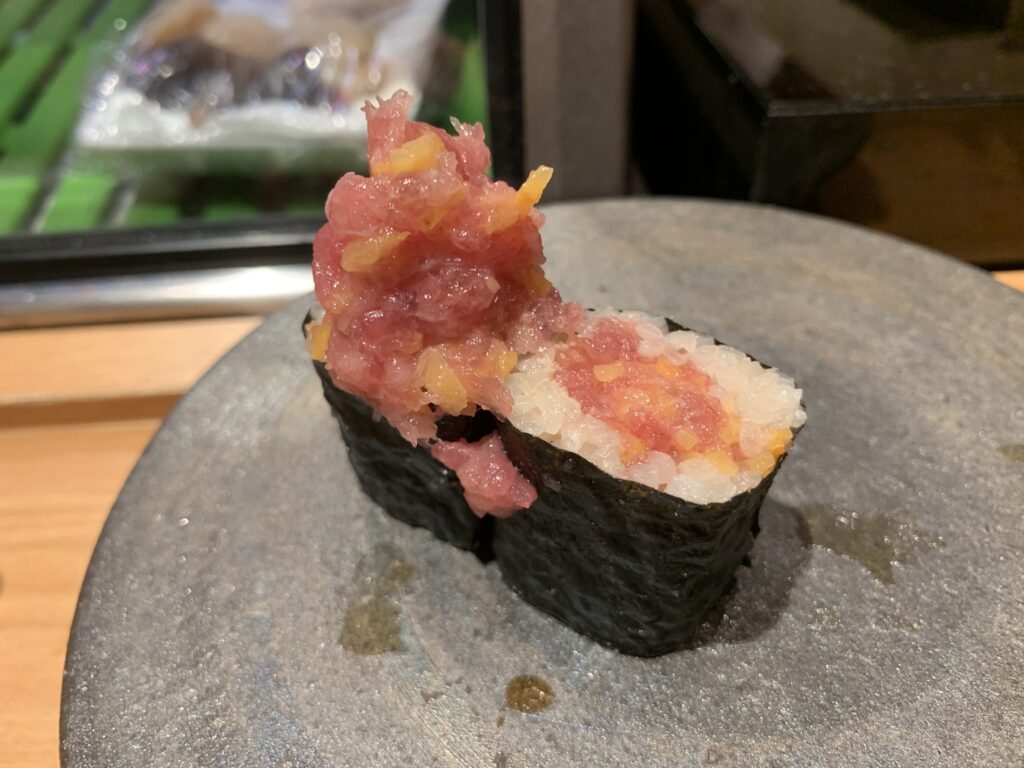
Toro Taku is a well-known sushi ingredient in Japan, made by mixing minced tuna and takuan (pickled daikon radish). The restaurant presented it on top of a thin roll for a unique twist.
Iwagaki (Rock Oyster)
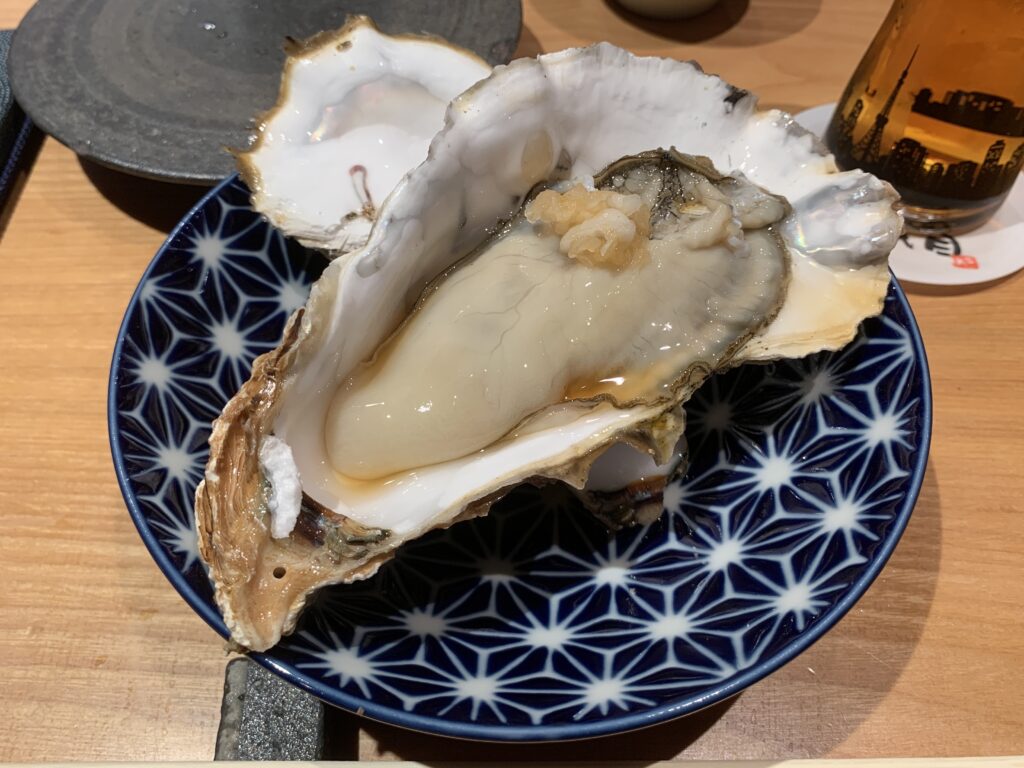
I enjoyed a quite large raw rock oyster. It was a substantial and flavorful oyster, a bit challenging to eat in one bite but worth it.
Others
I also savored a variety of other seafood dishes.
 cod milt
cod milt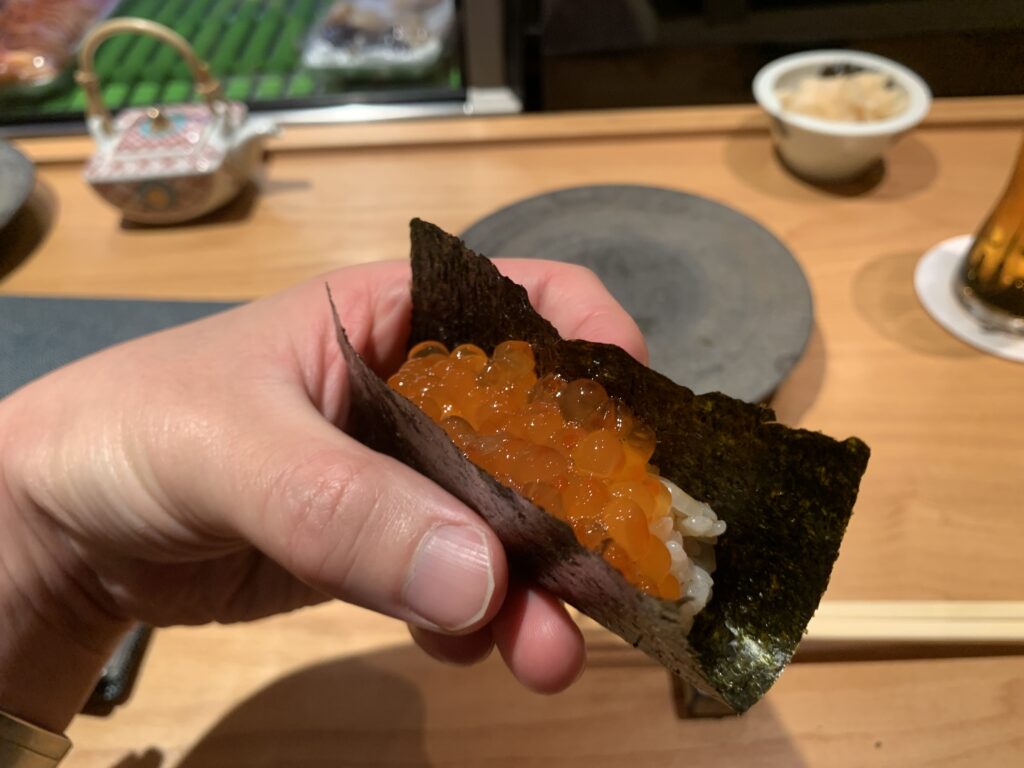 Salmon roe
Salmon roe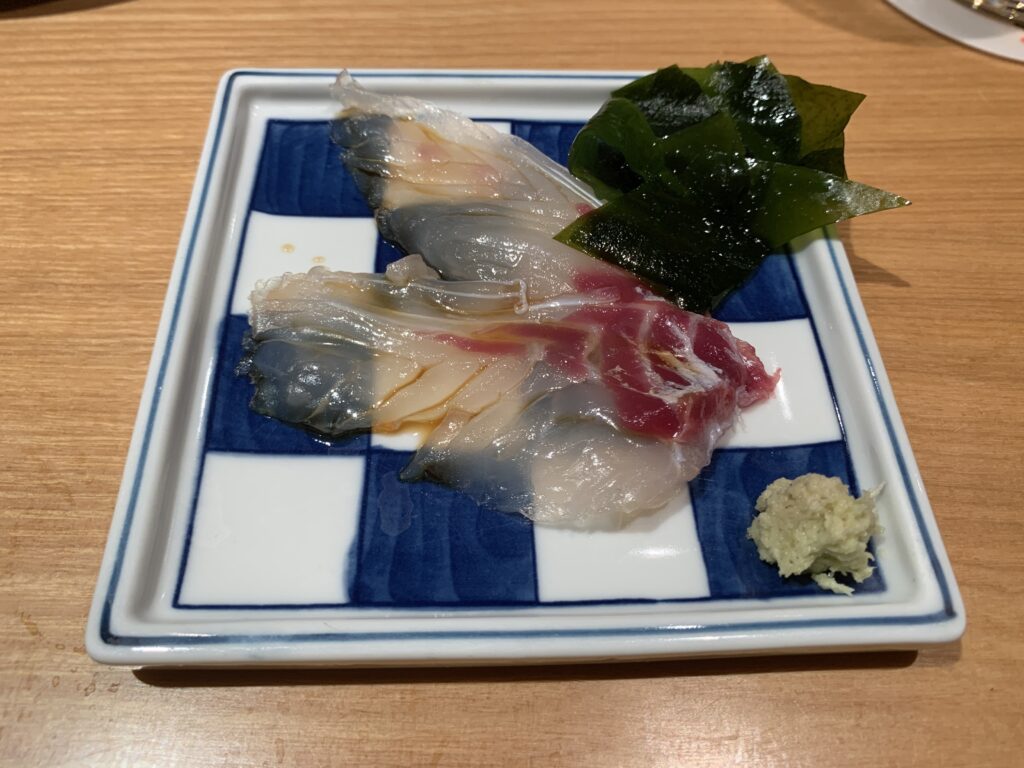 White meat fish cured with Kombu (Kelp)
White meat fish cured with Kombu (Kelp) Uni (sea urchin)
Uni (sea urchin)
